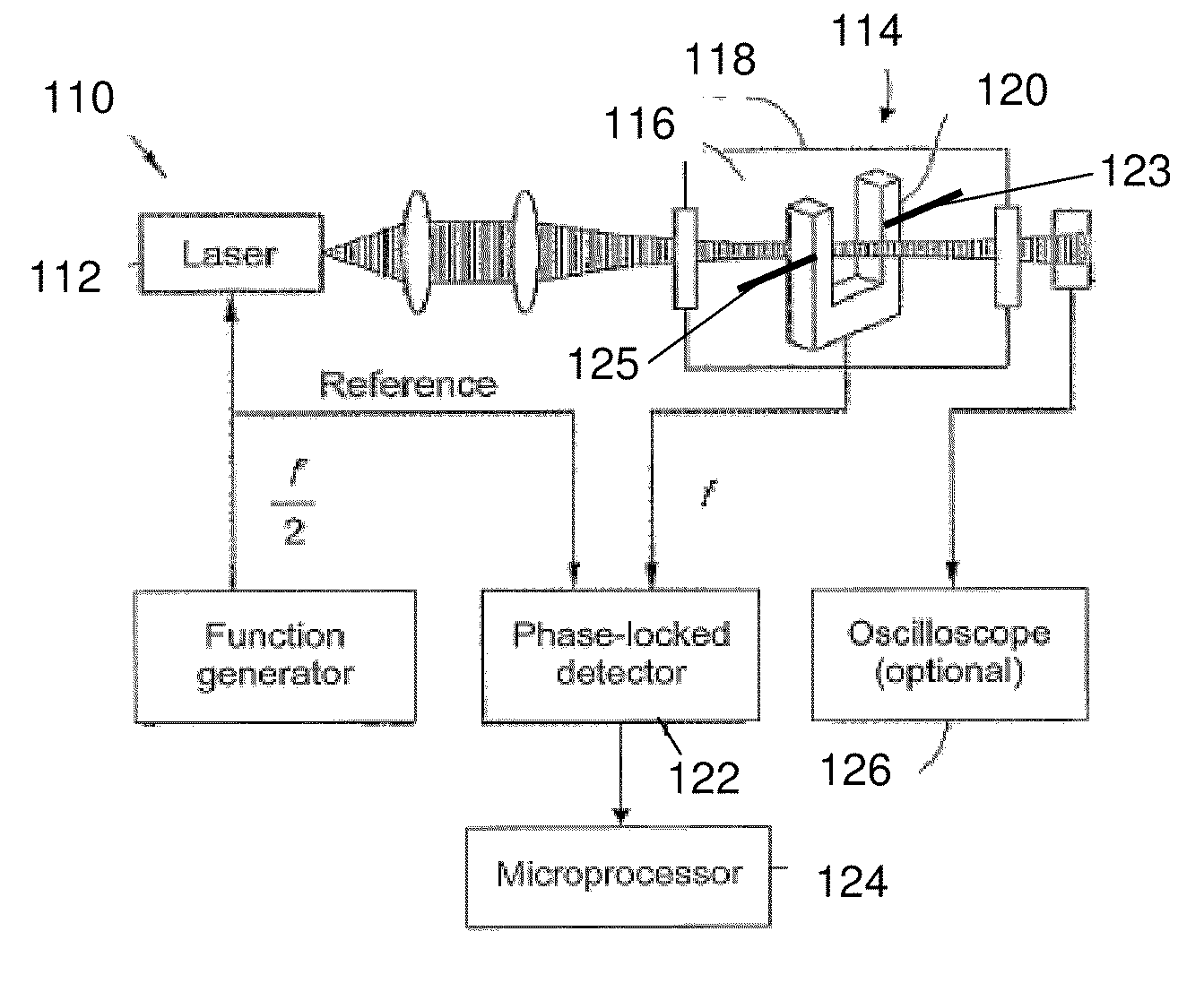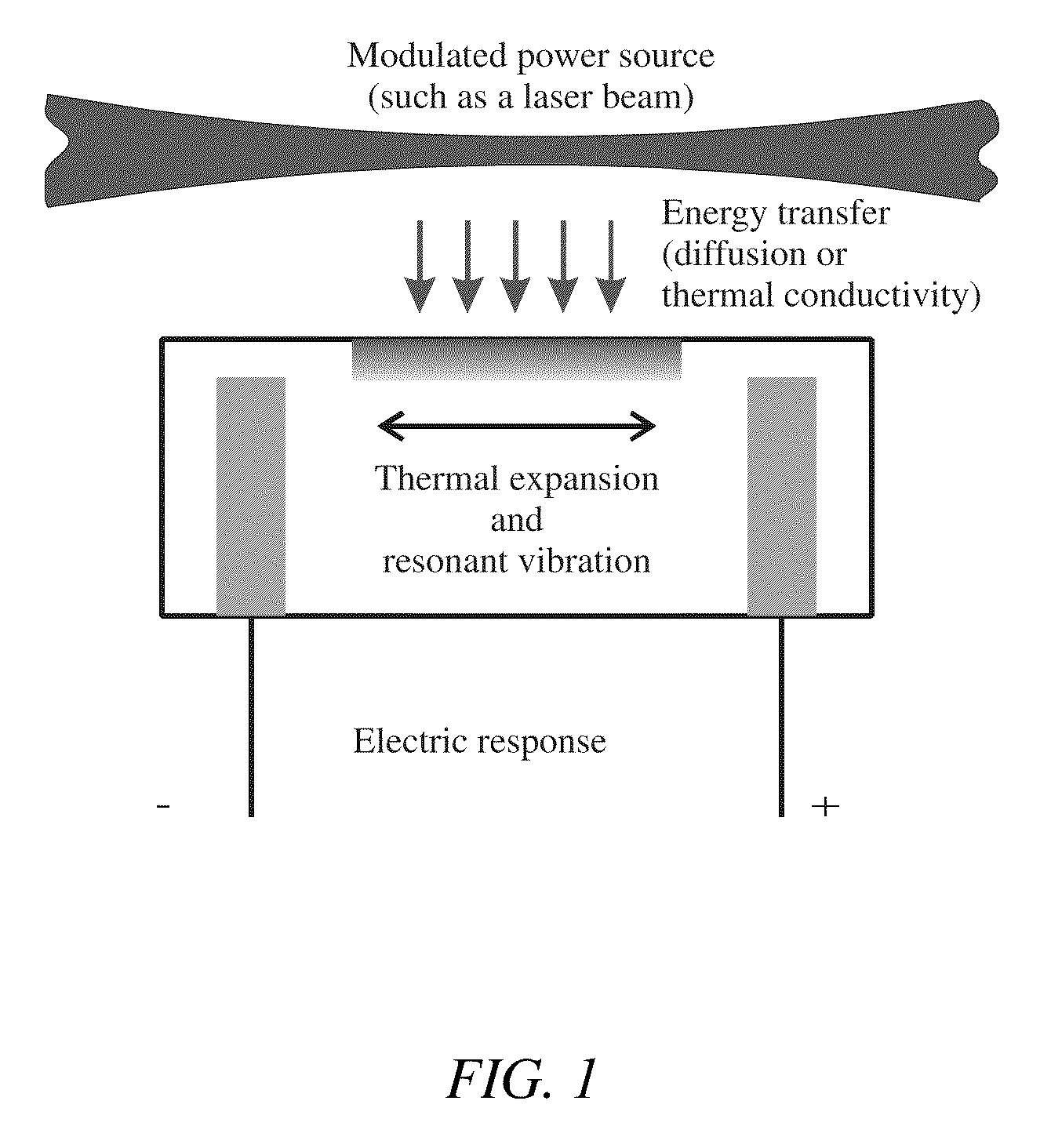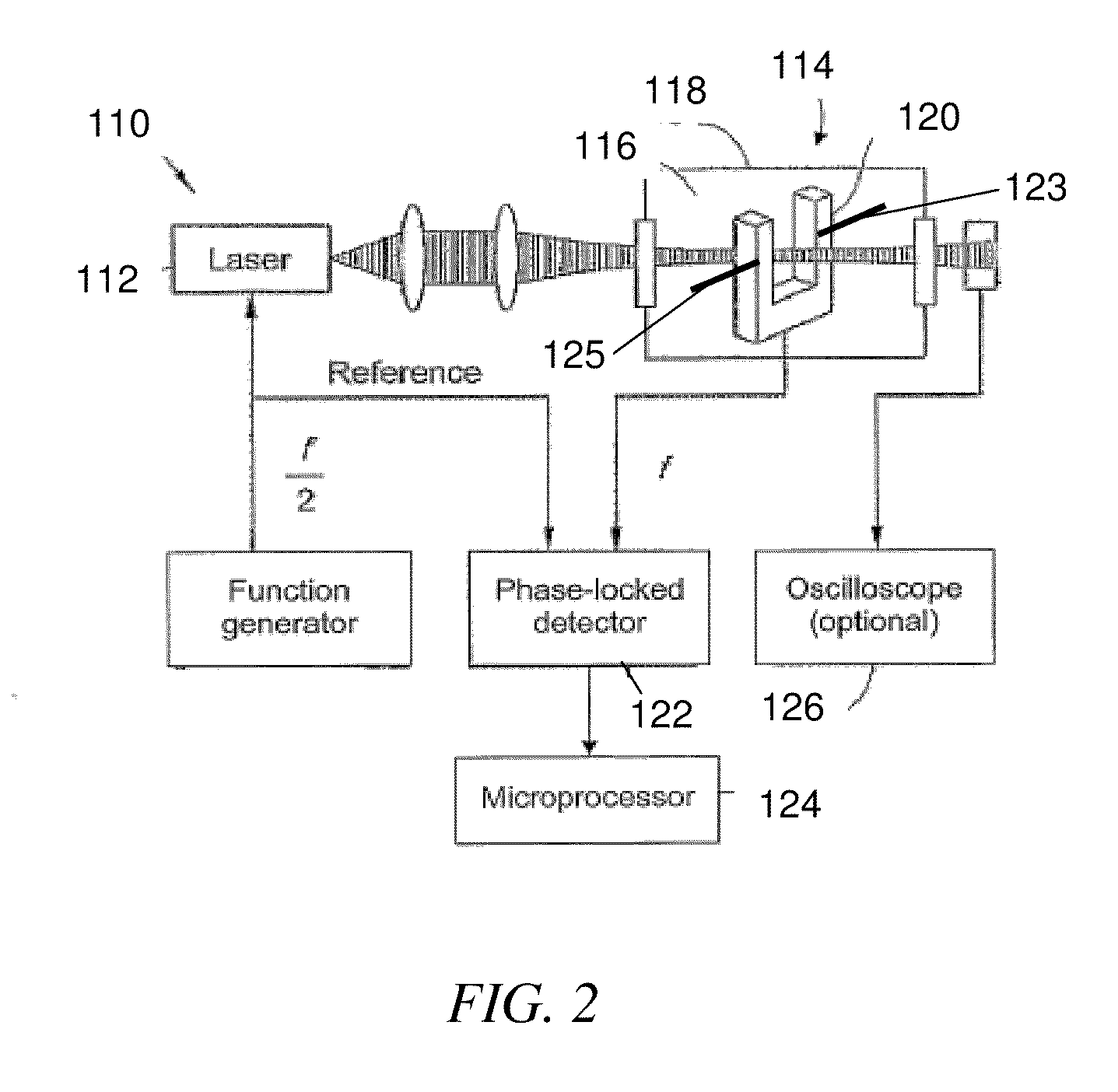Resonant Optothermoacoustic Detection of Optical Absorption
a technology of resonant optothermoacoustic and optical absorption, applied in the field of spectroscopy, can solve problems such as expansion or contraction of materials within the environment, and achieve the effects of reducing 1/f noise, extending interaction length, and zero background
- Summary
- Abstract
- Description
- Claims
- Application Information
AI Technical Summary
Benefits of technology
Problems solved by technology
Method used
Image
Examples
examples
[0036]The embodiments having been generally described, the following example is provided as a particular embodiment of the disclosure and to demonstrate the practice and advantages thereof. It is to be understood that the example is presented herein as a means of illustration and is not intended to limit the specification or the claims in any manner.
[0037]Referring to FIG. 5, test experiments were carried out using a 25 μm diameter, 5 mm long LF5 glass fiber. Attaching the fiber shifted the resonant frequency from ˜32760 Hz to ˜33540 Hz as compared to the original bare QTF. Based on the signal, which was generated in the cleanest (least absorbing) sections of the glass fiber by a 20 mW laser at λ=1550 nm, and the glass manufacturer data, the noise-equivalent limit of detectable fractional absorption was estimated as 2×10−6 Hz−½, or 40 nW·Hz−1 / 2 in terms of average absorbed power for the tested configuration (a smaller fiber will give lower noise). As a result, scanning the focused e...
PUM
 Login to View More
Login to View More Abstract
Description
Claims
Application Information
 Login to View More
Login to View More - R&D
- Intellectual Property
- Life Sciences
- Materials
- Tech Scout
- Unparalleled Data Quality
- Higher Quality Content
- 60% Fewer Hallucinations
Browse by: Latest US Patents, China's latest patents, Technical Efficacy Thesaurus, Application Domain, Technology Topic, Popular Technical Reports.
© 2025 PatSnap. All rights reserved.Legal|Privacy policy|Modern Slavery Act Transparency Statement|Sitemap|About US| Contact US: help@patsnap.com



